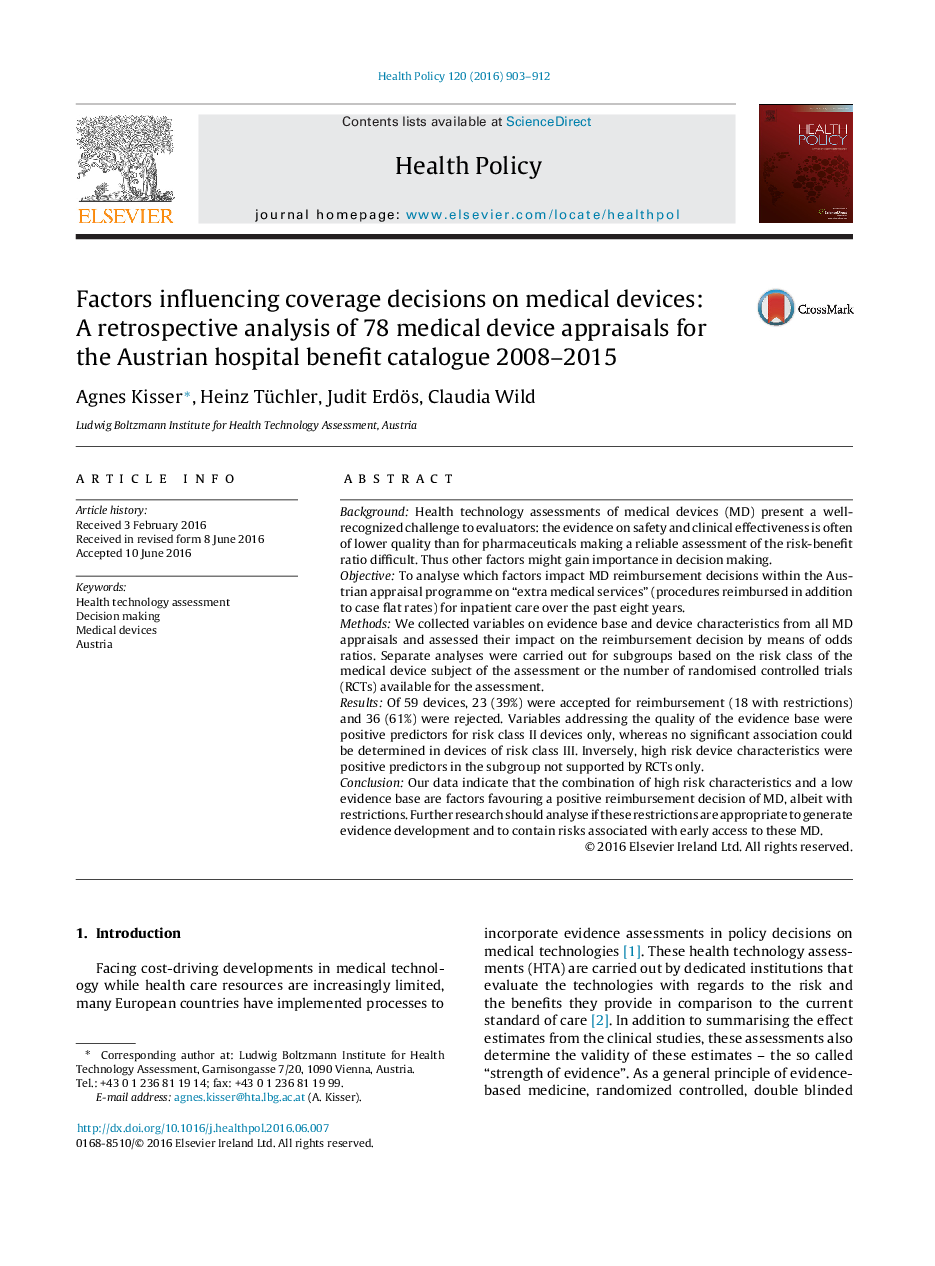| کد مقاله | کد نشریه | سال انتشار | مقاله انگلیسی | نسخه تمام متن |
|---|---|---|---|---|
| 4197746 | 1278979 | 2016 | 10 صفحه PDF | دانلود رایگان |
• We examined how various factors impact medical device coverage decisions in Austria.
• Several variables describing device characteristics and the evidence base were analysed.
• Evidence quality was a positive predictor for risk class II devices only.
• High risk device characteristics were positive predictors in the absence of RCTs.
• Coverage possibly more likely for high risk devices combined with low evidence.
BackgroundHealth technology assessments of medical devices (MD) present a well-recognized challenge to evaluators: the evidence on safety and clinical effectiveness is often of lower quality than for pharmaceuticals making a reliable assessment of the risk-benefit ratio difficult. Thus other factors might gain importance in decision making.ObjectiveTo analyse which factors impact MD reimbursement decisions within the Austrian appraisal programme on “extra medical services” (procedures reimbursed in addition to case flat rates) for inpatient care over the past eight years.MethodsWe collected variables on evidence base and device characteristics from all MD appraisals and assessed their impact on the reimbursement decision by means of odds ratios. Separate analyses were carried out for subgroups based on the risk class of the medical device subject of the assessment or the number of randomised controlled trials (RCTs) available for the assessment.ResultsOf 59 devices, 23 (39%) were accepted for reimbursement (18 with restrictions) and 36 (61%) were rejected. Variables addressing the quality of the evidence base were positive predictors for risk class II devices only, whereas no significant association could be determined in devices of risk class III. Inversely, high risk device characteristics were positive predictors in the subgroup not supported by RCTs only.ConclusionOur data indicate that the combination of high risk characteristics and a low evidence base are factors favouring a positive reimbursement decision of MD, albeit with restrictions. Further research should analyse if these restrictions are appropriate to generate evidence development and to contain risks associated with early access to these MD.
Journal: Health Policy - Volume 120, Issue 8, August 2016, Pages 903–912
